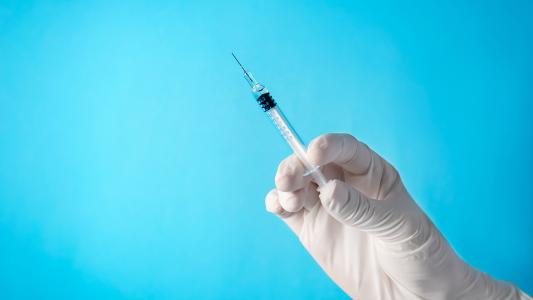Americans are about to experience their first Halloween during COVID-19, but it won’t be the first time a pandemic has cast a shadow over the spooky holiday stateside — the Spanish flu pandemic was in full swing on October 31, 1918.
That didn’t stop some people from celebrating the holiday, though, and the coronavirus pandemic doesn’t have to stop you, either — but try to follow health experts’ advice.
Is It Safe To Go Trick-or-Treating?
Trick-or-treating is central to many American families’ Halloween celebrations, but visiting as many neighbors as you can in a couple of hours is basically the opposite of social distancing.
While some places have outright banned trick-or-treating, many are letting it go forward — but is it safe?
Not as safe as a lot of other things you could do to celebrate Halloween during COVID-19, according to the CDC. It lists standard trick-or-treating — where kids knock on doors to receive treats from their neighbors — as a “higher risk” activity, compared to some others.
A safer option is for people to place individual goodie bags near the sidewalk in front of their homes — kids can then grab a bag as they pass each house. Some candy-givers have gotten even more creative, with plans to dispense treats via catapults and scary slides.
Another option is combining trick-or-treating with another holiday’s hallmark activity: the Easter egg hunt. Families can hide candy around their home or yard for children to find in lieu of going house to house as a “low risk” way to celebrate Halloween during COVID-19.
Learning From History
In 1918, trick-or-treating wasn’t yet a Halloween tradition — that didn’t happen until the 1920s — so parents didn’t need to worry about their kids catching influenza while begging and/or extorting candy.
In fact, they didn’t have to worry about their kids during the holiday much at all.
Ghosts by the thousands swarmed through the streets.
Ohio State Journal
Back then, Halloween was primarily an adult holiday, marked by private parties and street celebrations. It was also an excuse for adolescents to cause mischief, vandalizing property and pulling pranks.
During the 1918 pandemic, officials cancelled some of the planned Halloween activities and tried to discourage others — house parties could further the flu’s spread, they said, and many people wouldn’t be healthy enough to fix the damage to their property the next morning.
Based on media reports, though, their requests often fell on deaf ears.
“This night was more gloriously observed and property was more thoroughly devastated than at any time,” a reporter for Alabama’s Birmingham News wrote on November 1, 1918. “Ghosts by the thousands swarmed through the streets.”
Celebrating Halloween During COVID-19
The Spanish flu pandemic didn’t peak until months after Halloween, but it’s all but impossible to say exactly what effect the festivities of October 31, 1918, might have had on case numbers.
Still, “throngs” of people choosing to “jolify” on Halloween — as one Ohio newspaper described the night in 1918 — likely couldn’t help the situation, and it won’t help ours either.
With a few changes, you can still celebrate Halloween during COVID-19.
So, as they did back in 1918, health experts are urging people to be smart while celebrating Halloween during COVID-19.
If you decide to take the kids trick-or-treating, do so as safely as possible: wear masks, keep it brief, and stay six feet apart. Instead of going to a big indoor costume party or a haunted house, maybe stay home and carve pumpkins or watch scary movies.
If you do end up mingling with strange ghosts and ghouls this Halloween, though, be sure to sanitize your hands regularly and always wear a face mask. (And no, these don’t count.)
We’d love to hear from you! If you have a comment about this article or if you have a tip for a future Freethink story, please email us at tips@freethink.com.
